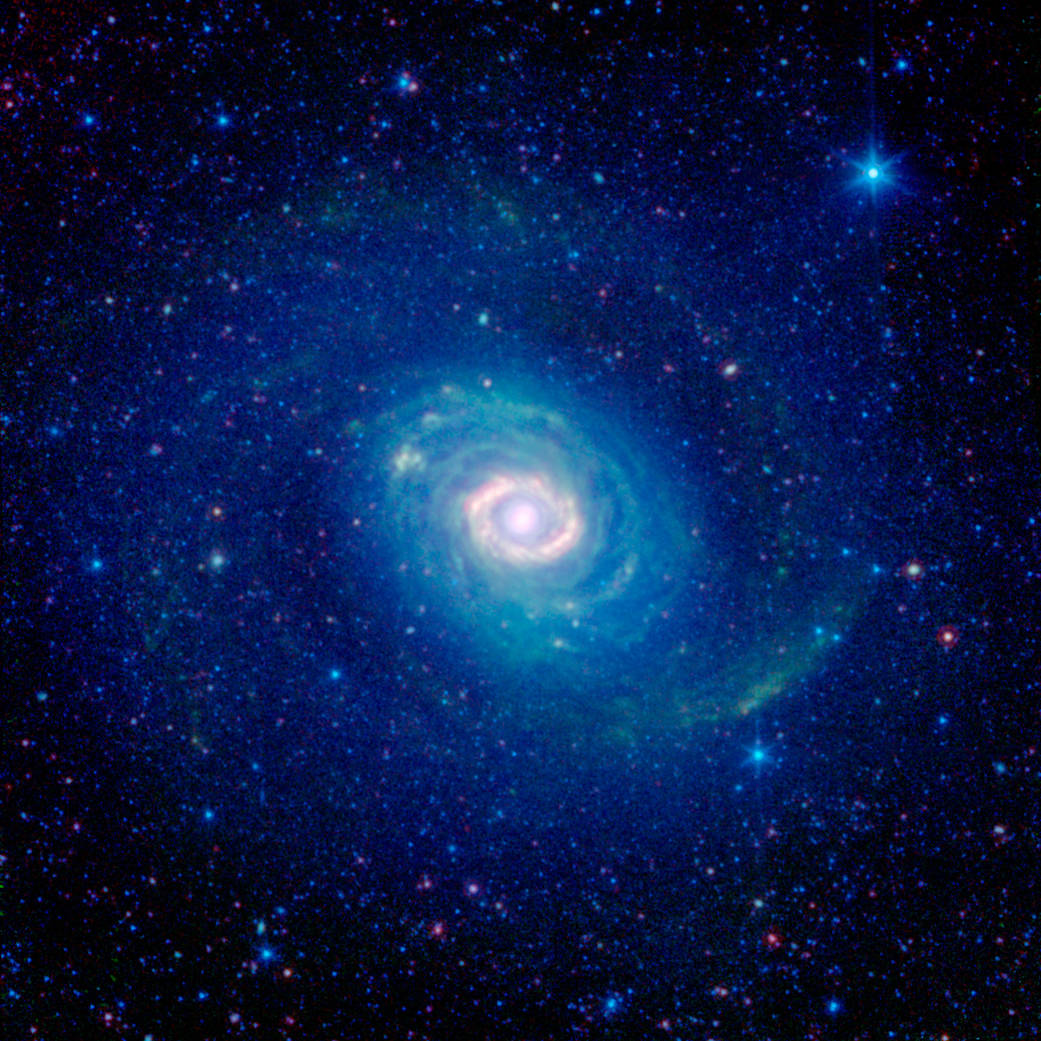How many rings do you see in this new image of the galaxy Messier 94, also known as NGC 4736? While at first glance one might see a number of them, astronomers believe there is just one. This image was captured in infrared light by NASA’s Spitzer Space Telescope.
Historically, Messier 94 was considered to have two strikingly different rings: a brilliant, compact band encircling the galaxy’s core, and a faint, broad, swath of stars falling outside its main disk.
Astronomers have recently discovered that the outer ring, seen here in the deep blue glow of starlight, might actually be more of an optical illusion. A 2009 study combined infrared Spitzer observations with those from other telescopes, including ultraviolet data from NASA’s Galaxy Evolution Explorer, now operated by the California Institute of Technology, Pasadena; visible data from the Sloan Digital Sky Survey; and shorter-wavelength infrared light from the Two Micron All Sky Survey (2MASS). This more complete picture of Messier 94 indicates that we are really seeing two separate spiral arms, which, from our perspective, take on the appearance of a single, unbroken ring.
The bright inner ring of Messier 94 is very real, however. This area is sometimes identified as a “starburst ring” because of the frenetic pace of star formation in the confined area. Starbursts like this can often be triggered by gravitational encounters with other galaxies, but in this case might be caused by the galaxy’s oval shape.
Tucked in between the inner starburst ring and the outer ring-like arms is the galaxy’s disk, striated with greenish filaments of dust. While these dusty arcs look like a collection of rings, they actually follow tightly wound spiral arcs.
Infrared light with wavelengths of 3.6 and 4.5 microns is represented in blue/cyan, and primarily shows the glow from starlight. Light of 8 microns is rendered in green, and 24-micron emission is red, tracing the cooler and warmer components of dust, respectively. The image was taken in 2004, before Spitzer ran out of cryogen.
The 2MASS mission was a joint effort between the California Institute of Technology, Pasadena, Calif., the University of Massachusetts and NASA’s Jet Propulsion Laboratory, Pasadena, Calif. Data are archived at the Infrared Processing and Analysis Center at Caltech.
Image credit: NASA/JPL-Caltech
2 min read




























